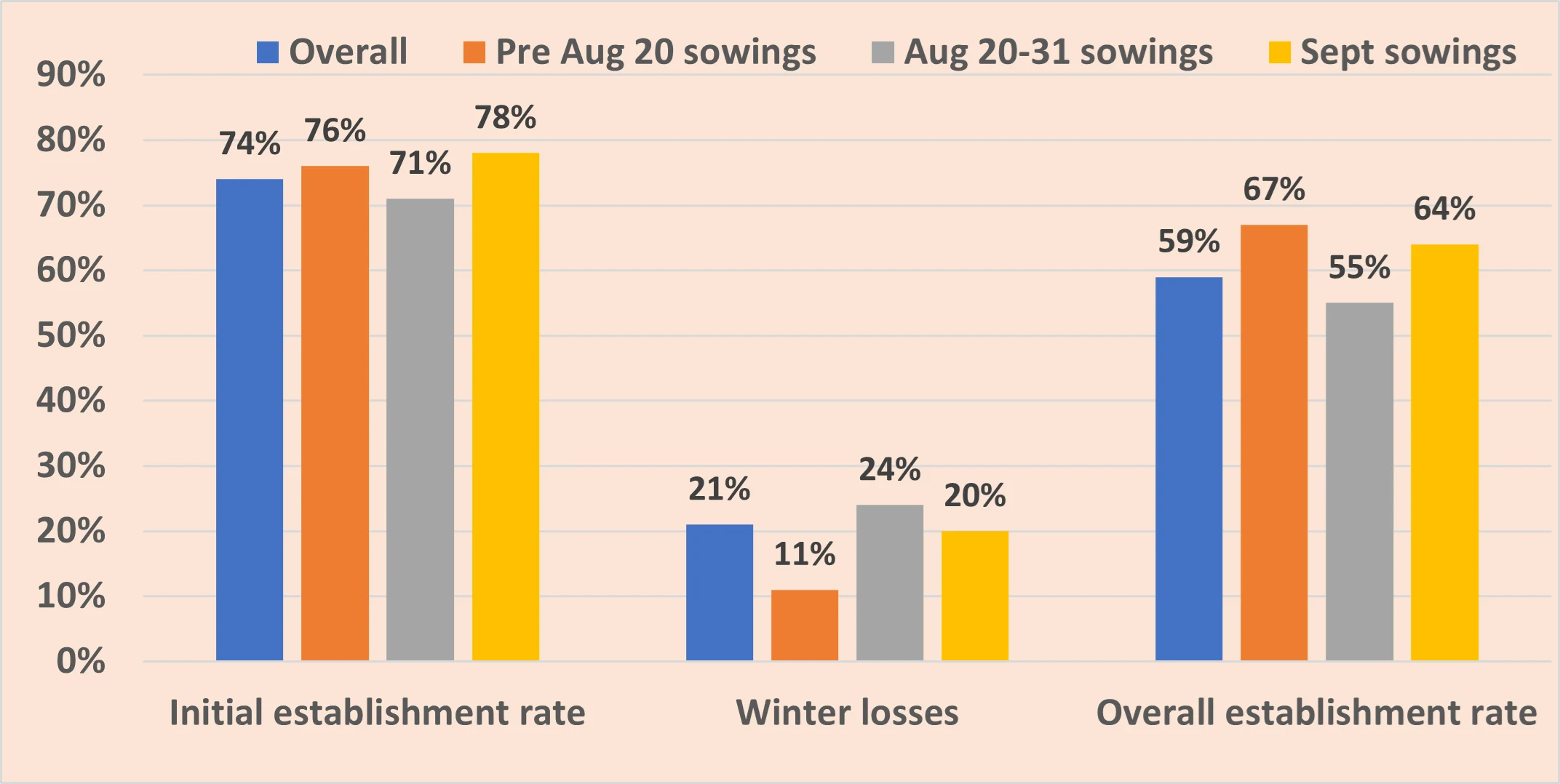
Despite plant losses averaging 21% over the winter, most oilseed rape crops in this season’s extensive Dekalb field scale trials on farms across the country went into flowering with populations nicely within the 25-40 plants/m2 target, reveals Bayer monitoring.
Author
| 1st June 2023Farm Trials Show Most OSR Populations Nicely on Target
Despite plant losses averaging 21% over the winter, most oilseed rape crops in this season’s extensive Dekalb field scale trials on farms across the country went into flowering with populations nicely within the 25-40 plants/m squared target, reveals Bayer monitoring.
All but three of the sites from Wiltshire in the south west to the Scottish borders had average OSR populations of over 25 plants/m squared with none under 15 plants/m squared. And the one site with more 40 plants/m squared was only marginally above the target.
“We recorded an average establishment rate of 74% across all varieties ahead of the winter from a sowing rate of 50 seeds/m squared,” reports Bayer technical and trials manager, Richard Williams. “Taking into account the winter losses, the overall establishment rate averaged a very acceptable 59%. What’s more, there was a difference of only four percentage points between the eight main Dekalb varieties included,
“We recorded a wider range of overall establishment rates between the varieties on the three sites proving the most challenging, with newcomer DK Exbury and DK Extremus showing the highest rates. But even those with the lowest overall establishment had decent crops going into flowering.”
As well as the poorest initial establishment, the monitoring showed mid-late August sowings suffering higher plant losses over the winter, leading to a noticeable lower overall establishment rate that either earlier or later plantings. Albeit from a small sample, winter plant losses were, interestingly, the lowest from earlier sowings (Figure).
Figure: Initial and Overall Establishment Rates in 15 Dekalb Farm Strip Trials 2022/23

At 80% and 79% respectively, HOLL variety V367OL and DK Exsteel showed the best initial establishment rates, just ahead of DK Exstar, DK Expectation and DK Exbury. Taking into account winter losses, DK Exsteel and DK Exbury delivered the best overall establishment rates at 61% and 50%, with V367OL, DK Expectation and DK Extremus close behind.
“All the varieties showed strong winter hardiness, with none rated at over 1.5 on our 1-9 scale (where 1 is most hardy),” Mr Williams reports. “Although the differences were small, if anything, winter hardiness increased with earliness of sowing – from an average rating of 1.6 with September sowings, to 1.4 with those sown between August 20 and 31 and 1.0 from earlier August-sown crops.
“On the single site where winter damage was particularly noticeable, DK Exstar stood out as the most hardy, with DK Excited and V367OL also particularly tolerant of the winter.”
Across all varieties the average development after winter score was 2.6 on the 1-9 scale (where 9 = earliest). Understandably given the season, this was somewhat lower than the average of 3.3recorded across a similar variety mix last year. There is also a suggestion that earlier sowings may be associated with a later start to regrowth than later ones but this needs to be confirmed across more than the single season.
“Definitely the earliest to start re-growing this spring were DK Exstar and DK Extremus followed by DK Exsteel, DK Expectation, DK Excited and V367OL,” Mr Williams notes. This was a very similar pattern to the one we recorded the previous spring, with all eight varieties growing rapidly into flowering once they started.
“Amongst other things, this underlines the particular importance of early getting early fertiliser applications onto the earliest starters and matching stem extension spraying carefully to crop development which can be very rapid indeed with the most vigorous hybrids like ours. “
Click here to request a FieldView Demo